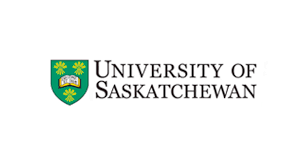University of Saskatchewan: Global Water Futures Observatories a critical step towards water security for Canadians
Now six years on, GWF is the largest and most published university-led freshwater research program in the world and includes 213 faculty investigators, 531 end-users, 1,826 new researchers, and a network of 23 Canadian universities working on 65 projects and core teams.
The program has also established or operates 76 water observation sites, 27 deployable measurement systems, and 31 state-of-the-art university-based environmental and aquatic analysis facilities.
These facilities monitor things like algae activity in freshwater lakes that are the drinking water source for millions of people; snowpacks and glaciers in the high Canadian Rockies that feed the rivers and streams of western North America and can contribute to catastrophic flooding; the health of the Great Lakes and contaminants in groundwater used as drinking water sources for Indigenous communities.
Thanks to new funding from the Canada Foundation for Innovation (CFI) Major Science Initiatives (MSI), these critical research stations and their data management system will continue to operate under the GWF umbrella as the Global Water Futures Observatories (GWFO).
“This funding means the observational core of Global Water Futures will carry on to at least 2029. Thee tremendous heritage of observations that go back to the early 1960s at Canadian hydrological research basins will continue to be honoured and maintained as sources of science for our professors, places to train our graduate students, and places to test our models and make new discoveries about the changing hydrology in Canada, from the Arctic down to the Great Lakes,” said Dr. John Pomeroy (PhD), USask distinguished professor and director of GWF, and the Canada Research Chair in Water Resources and Climate Change.
“The observations will help us to continue to develop solutions to manage and conserve Canada’s water supplies and major rivers.”
GWFO provides data to provide early warning and test beds for predictions of flood, drought, and water quality issues, and operates across seven provinces and territories, including the Great Lakes Basin.
USask leads the nine-university collaboration that operates the network to monitor and help support the development of solutions for the impending water crisis that Canadians face due to climate change, inadequate water management, the proliferation of toxic contaminants, and environmental degradation.
The announcement of $15.25 million in funding for the $40.4 million GWFO came in late August along with several other USask projects, including $2.6 million for SuperDARN Canada, $53.9 million for the Vaccine and Infectious Disease Organization (VIDO), and $97 million for the Canadian Light Source (CLS).

